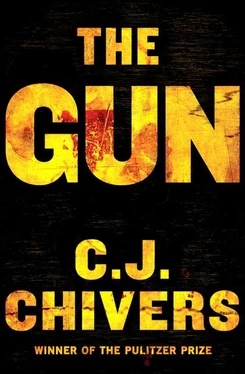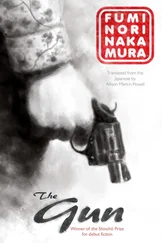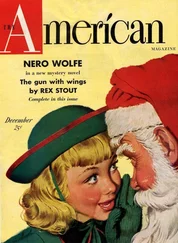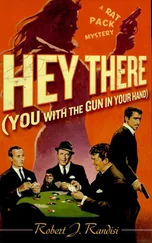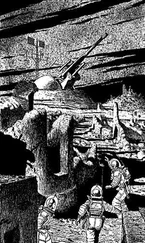As for design or manufacturing shortcomings, he said: “We did have some problems, including the corrosion of the aluminum receiver. The measure of them was not so much to cause a Congressional investigation.” He also said the path the rifle took from the ArmaLite prototypes to the rifles issued in Vietnam was such that it was not exhaustively tested by the Army’s ordnance corps, in part because the ordnance community resisted the rifle in both concept and particulars. “The M-16 never went through the testing process that other rifles had undergone,” he said. “Had it gone through the normal cycle of introduction, it probably would have been a different rifle.” As for the complaints by troops in Vietnam, like those of Hotel Company, Second Battalion, Third Marines, he said, “I think many of the tales have been exaggerated. We took them all seriously, but—” and he spoke about the political quarrels the company faced in Washington. When provided a copy of Ito’s correspondence and of the memorandum of record from the meeting he attended with Ito in the Pentagon in December 1967, he said, “We never ever ever tried to hide anything.” Their only concern, he said, was that soldiers have the best possible rifle. 96
Several weeks after Benke and Ito appeared at the Pentagon, the Viet Cong and the North Vietnamese Army launched the Tet Offensive, striking scores of American and South Vietnamese positions across the country simultaneously. Tens of thousands of communist fighters had coordinated an action. In the matter of a rifle, the defending American troops, after several years in Vietnam, still did not have a fully reliable firepower match. Matters were more dire for the Americans’ Vietnamese allies, who often were armed with surplus weapons from World War II. One of the senior South Vietnamese officers, Lieutenant General Dong Van Khuyen, lamented his soldiers’ predicament against the better-armed foe. “During the enemy Tet offensive of 1968 the crisp, rattling sounds of the AK-47s echoing in Saigon and some other cities,” he said, “seemed to make a mockery of the weaker, single shots of Garands and carbines fired by stupefied friendly troops.” 97With Tet, the war had changed. The American and South Vietnamese forces were not defeated in the field, and the South Vietnamese government did not fall, as the architects of the communist offensive had hoped. But the communists’ ability to mass and fight shocked Washington, which had never expected the war to be this hard, or its foes this capable.
By late in 1968, the M-16 was performing better than it had, but it was far from good enough, and it was late. Survey teams were finding a higher level of satisfaction with the M-16. New troops arriving in Vietnam had been trained on the rifle, cleaning gear was available, and the rifles now had chromium-plated bores and the new buffer. The worst problems were past. But throughout the year, more problems were still reported—not at the rate of 1966 and 1967, but alarming nonetheless. A battalion in the 199th Infantry Brigade had seventeen rifles blow up on an operation conducted in muddy terrain and wet weather, and apparently water or mud had clogged the barrels. 98The rifle, for all of its modifications, struggled to function when exposed to the worst sorts of field conditions. In Hotel Company of Second Battalion, Third Marines, Corporal Jack Beavers was in a battle in Quang Tri province on July 7, 1968. The NVA were firing artillery at the Marines, and as the corporal crouched and crawled to stay alive, his M-16 became coated with sand. Later, as his platoon assaulted across a rice paddy toward a village, the rifle jammed. So did the M-16s of other Marines around him. As Marines dropped, felled by NVA fire, he picked up their M-16s, only to have those rifles jam, too. Corporal Beavers went through three or four M-16s before the fighting stopped. 99Seven Marines in Hotel Company died that day, including his best friend, Lance Corporal Gerald L. Baldwin, who was shot several times.
In autumn 1968, Ito was back in Vietnam, where he and another Colt’s field representative toured military units around Saigon. They found that many magazines did not seat well on the weapons, which caused M-16s to fail to feed when fired on automatic. They found problems with the selector switch, which was often difficult to turn. And, even after all of the changes, they found that “quite a few rifles are rusting or corroding,” especially around the selector switch. In a tape sent back to Colt’s offices, Ito said that “damaged or poor functioning parts were noted in rifles which were only in use for two months maximum.” 100
The Pentagon eventually accepted that M-16s would jam at higher rates than it or its soldiers would have liked. One investigation early in the year found that during a seven-hour firefight near Chu Lai, Company D of the Fifth Battalion, Seventh Cavalry suffered many jammed weapons, and some were so severe that by the end of the firefight, of the sixty-five or seventy M-16s fired, “twelve were out of action.” The Pentagon noted that “this was directly related to the inordinate amount of sand which was built up in the weapons during the rapid movement through the dikes and rice fields.” “From past observations and tests,” the official assessment continued, “it is known that small arms have difficulty in functioning satisfactorily in a severe sand environment.” 101
Such was the state of resignation. The M-16, which at the start of the war had been a symbol of innovation and technical promise, had become instead a symbol of the mix-ups of war, and of a dishonest Pentagon and a manufacturer with which it worked. As public opinion on the war shifted, America’s undependable rifle became another element of disaffection, a symbol of failure for a military that had won World War II and for a nation that believed its industry was among the best in the world. It was a demoralizing comedown, as one embittered officer wrote:
The M-16 sure is a marvelous gun,
and in a god-awful war
it provides some keen fun.
The bullet it fires appears too small to harm
but it makes a big hole
and can tear off an arm.
Single shot, semi, or full automatic,
a real awesome weapon,
’tho in performance sporadic.
But listen to Ichord and forget that stuck bolt,
for you aren’t as important
as a kickback from Colt.
So carry your rifle (they don’t give a damn),
just pray you won’t need it
while you’re in Vietnam.
The M-16 is issue, though we all feel trapped.
More GIs would protest,
but somehow they got zapped. 102
* * *
Several months after the fight for Ap Sieu Quan, Staff Sergeant Elrod was reassigned from Hotel Company’s First Platoon to become the battalion’s intelligence chief, and was meritoriously promoted, to the rank of gunnery sergeant. The battalion continued to operate against the NVA in the provinces just south of North Vietnam. Throughout this time, he refused to carry an M-16. He had seen too many M-16s jam in too many fights, and lost too many Marines. After the battalion’s rifles were replaced in December 1967, the newer rifles performed better, but many Marines still had problems, and the rifles with chromed chambers would not be available for months. The M-16 remained a bitter subject.
One day in spring 1968, after a skirmish in a gully near Khe Sanh, Gunnery Sergeant Elrod found an AK-47 beside a dead North Vietnamese soldier. The rifle was in excellent condition. He claimed it as his own, along with several magazines. This was not a trophy. It was a tool. Now he had an assault rifle he could depend on. The AK-47 did not solve all his problems. It solved one problem but replaced it with another. There was a special danger related to carrying the enemy’s weapon: The M-16 and the AK-47 have distinctly different sounds, and whenever Gunnery Sergeant Elrod fired his new weapon, he risked drawing fire from other Marines. He considered this less of a risk than carrying a rifle that might not fire at all.
Читать дальше
